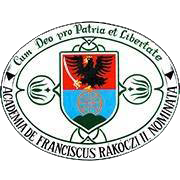Please use this identifier to cite or link to this item:
https://dspace.kmf.uz.ua/jspui/handle/123456789/3224| Title: | Інтерпретація фольклорного образу русалки в словесній та художній творчості Т. Г. Шевченка |
| Other Titles: | Interpretation of the folk image of a mermaid in the verbal and artistic works of T. Shevchenko |
| Authors: | Юдіта Павлович Pavlovics Judit Judit Pavlovich Андрея Певсе Pősze Andrea Andreya Pevse |
| Keywords: | русалка;mermaid;балада;ballad;образ;image;фольклор;folklore |
| Issue Date: | 2021 |
| Publisher: | Видавничий дім «Гельветика» |
| Type: | dc.type.study |
| Citation: | In Закарпатські філологічні студії. 2021. Випуск 20., Том 2. с. 109 -117. |
| Series/Report no.: | ;Випуск 20., Том 2. |
| Abstract: | Abstract. The article clarifies the relationship between the mythological semantics of the image of the mermaid and its artistic interpretation by the famous poet and artist T. Shevchenko. The era of romanticism directly warned and prepared the poet’s speech. The start of Taras Shevchenko’s literary activity falls between origin Ukrainian folklore and ethnography, the emergence of the first collections of folk poetry, in the heyday of Ukrainian romanticism. All this could not affect the outlook of the poet, and therefore his art system. Creativity of T. Shevchenko rooted folk elements. The sources writer’s work are the reality of that time, folklore and literary tradition. Shevchenko brought out love for folk art from his native word, from the serfdom. This love and wide knowledge with the works of Ukrainian folk literature had a great influence on his poetic work. The fantastic element in them is built on popular beliefs about the dead, charms, metamorphoses. The poet artistically interpreted folk demonology- In the ballads “The
Mighty Dnieper”, “Drowned”, “Mermaid” are in fact all the main characters Ukrainian demonology used folk stories about turning girls into the mermaids. The character of the mermaid are used by poet as a means for establishing justice. They have a social pointless extravaganza and horror and have a real and social basis. These are children of cover, victims of lordly debauchery. Mermaids in T. Shevchenko’s ballads have preserved human character traits, there are family ties between them, they distinguish between daughter and mother, they are all sisters, who welcome new drowned women. Shevchenko was not only a great poet, a master of the poetic word, but also a wonderful painter. He made two pencil sketches for the ballad “Drowned” and one for the ballad “Mermaid”. Later painted “Mermaids” (also known as “Mermaids
on the Dnieper”), as a sketch of paintings on the ceiling and walls, the plot is based on the theme “How mermaids catch the moon”, the content of this picture resembles a scene from the ballad “The Mighty Dnieper”, where mermaids turn to the moon, and painter also drew three sketches for this drawing called “Mermaid”. Taras Shevchenko portrayed mermaids as beautiful girls, naked and with long hair, sometimes in a girl’s transparent dress in wreaths, singing and tickling a girl or a boy to death, as imagined in the people. Резюме. У статті з’ясовується співвідношення міфологічної семантики образу русалки та його мистецької інтерпретації відомим поетом та художником Т. Шевченком. Доба романтизму безпосередньо попередила і підготувала виступ поета. Початок його літературної діяльності припадає на період зародження українського фольклору та етнографії, появи перших збірок народної поезії та період розквіту українського романтизму. Усе це не могло не вплинути на світогляд поета, а отже, і на художню систему. Творчість Т. Шевченка вкорінена фольклорними елементами. Джерелами творчості письменника є тогочасна дійсність, фольклор і літературна традиція. З рідного слова, з кріпацького середовища виніс Шевченко любов до народної творчості. Ця любов та широка обізнаність із творами української народної словесності значно впливала на його поетичну творчість. Як поет Шевченко починається з балад. Фантастичний елемент у них побудований на чарах, метаморфозах, народних віруваннях про мерців. Поет художньо інтерпретував народну демонологію. У баладах «Причинна», «Лілея», «Русалка» головні герої є особами української демонології, використано народні перекази про перетворення дівчат на русалок. Цей образ використаний поетом як засіб для встановлення справедливості, позбавлений безпредметної феєричності і жахів, має реальну і соціальну підоснову. Русалки в баладах Т. Шевченка зберегли людські риси характеру, між ними існують родинні зв’язки, розрізняють дочку і матір, між собою всі вони сестри, які привітно зустрічають нових утоплениць. Шевченко був не тільки великим поетом, майстром поетичного слова, а й прекрасним художником. Він виконав два начерки олівцем до балади «Утоплена» та один до балади «Русалка». Пізніше художник виконав малюнок «Русалки» (інша назва «Русалки на Дніпрі») як ескіз до розписів плафона й стін, сюжетною основою є тема «Як русалки місяць ловлять», зміст цієї картини нагадує сцену з балади «Причинна», де русалочки звертаються до 110 Випуск 20.. Том 2 місяця, крім цього, художник намалював до неї ще й три етюди під назвою «Русалка». Тарас Шевченко відобразив русалок як гарних дівчат, голих і з довгим волоссям, подеколи в дівочому прозорому вбранні у вінках, які співають та залоскочуть дівчину чи парубка до смерті, як і уявляли в народі цих істот. Ключові слові: русалка, балада, образ, художник, фольклор. |
| URI: | https://dspace.kmf.uz.ua/jspui/handle/123456789/3224 |
| ISSN: | 2663-4880 (Print) 2663-4899 (Online) |
| metadata.dc.rights.uri: | http://creativecommons.org/licenses/by-nc-nd/3.0/us/ |
| Appears in Collections: | Pavlovics Judit Pősze Andrea |
Files in This Item:
| File | Description | Size | Format | |
|---|---|---|---|---|
| Pavlovics_J_Posze_A_Intrerpretatsiia_folklornoho_obrazu_Rusalky_v_slovesnii_ta_khudozhnii_2021.pdf | In Закарпатські філологічні студії. 2021. Випуск 20., Том 2. с. 109 -117. | 5.35 MB | Adobe PDF | View/Open |
This item is licensed under a Creative Commons License





